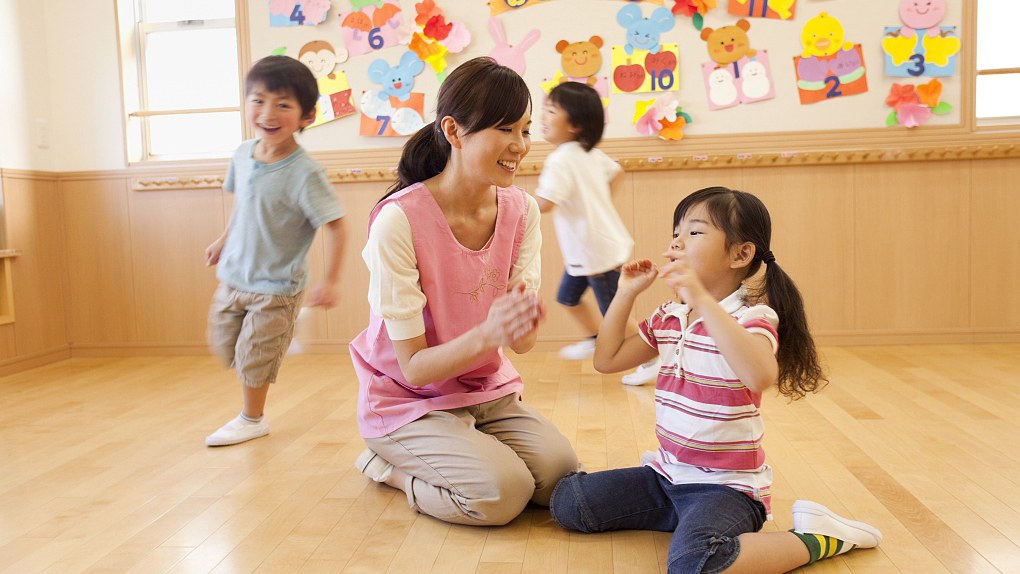
Education
22:57, 24-Feb-2019
New standards spur rethinking on kindergarten design
By Guan Chao
02:24

A set of standards for kindergarten design has recently been published, adding a new chapter to China's early childhood education.
The document was jointly issued by the ministries of education and of housing and urban-rural development in January. The detailed standards cover elements such as site selection, layout, and facilities.
"It involves safety, hygiene, utility, green architecture, and economical use of land,” said Southeast University's Ma Xiaodong, who spearheaded the drafting of the document. “It will help create a good environment for kids to grow and study. It aims to serve children."
But most importantly, the document stressed focusing on children's actual needs.

An aerial view of a kindergarten in Guangzhou, Guangdong Province, January 29, 2019. /VCG Photo
An aerial view of a kindergarten in Guangzhou, Guangdong Province, January 29, 2019. /VCG Photo
Ma explains that the principles emphasize flexibility in meeting children's different needs – variation over set rules.
"... Architectural style, the interior space, the facilities must be fun because children by nature want to explore," Ma said.
China is seeing a fast-growing market for pre-school education, partly propelled by a large number of children who are about to come of school age.
Resources for public kindergartens have been limited. And parents hesitate over the uneven service quality of the private market.
Scandal-hit private kindergartens in recent years have also fueled more concerns over preschool education.
Authorities have stepped up efforts to regulate these private institutions and bring profiteering activities in check.
Rethinking kindergarten design is just one step being taken in studying the problem of how to make preschool universally beneficial.

SITEMAP
Copyright © 2018 CGTN. Beijing ICP prepared NO.16065310-3
Copyright © 2018 CGTN. Beijing ICP prepared NO.16065310-3